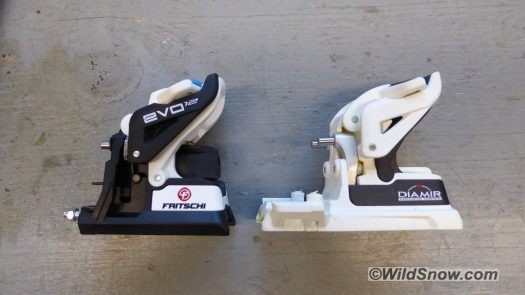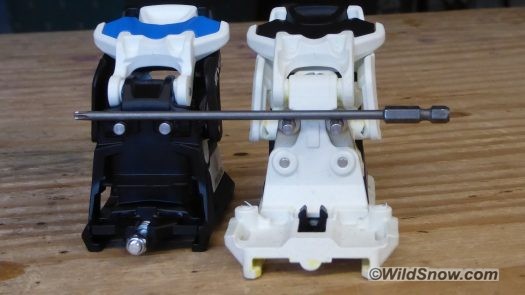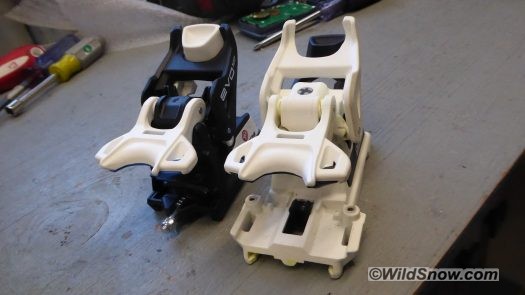(This post sponsored by our publishing partner Cripple Creek Backcountry.)
Someone asked. Evo and Vipec ski touring binding heels are more similar than different. They have virtually the same vertical elasticity (very little, same as other classic tech bindings), similar heel lifts, and the same pin height above ski. A few photos. I did not do a tear down for fear of ruining my functional set of Evos, we’ll perhaps do that during summer. Though I’m not sure a teardown is necessary. Any questions, ask away.

Vertical release is accomplished by the pins spreading apart as the boot heel fitting is pulled up. Evo pins move exactly left-right while the Vipec pins are on rotating arms and actually might contribute a fraction of a millimeter to vertical elastic travel. Fritschi probably had good reasons for this change, but interesting that Evo goes back to fully “classic” tech binding heel release design.
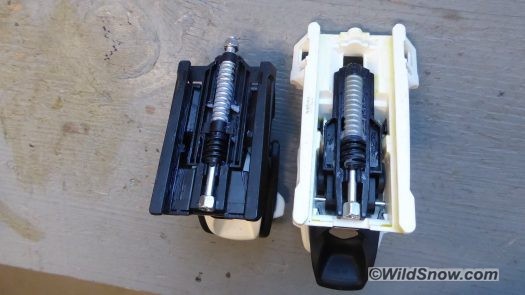
Both bindings have good boot length range, as well as ski flex compensation. The Vipec boot length adjustment range is about 3 cm, with Evo giving about 3.5 — there is a bit of a judgment call on how far back you can move the heel unit for boot length adjustment, for larger more aggressive skiers I don’t like to set as far back as possible. To clarify, while mounting this sort of binding you can use the “standard” settings of a mounting jig or template, or mess around with setting the boot length adjustment so it’s biased forward or back (by changing the actual physical mounting position of the heel unit track). I prefer to analyse what appears to the be the strongest position for the heel unit, and bias the mount so the binding heel ends up in that general area on the adjustment track.
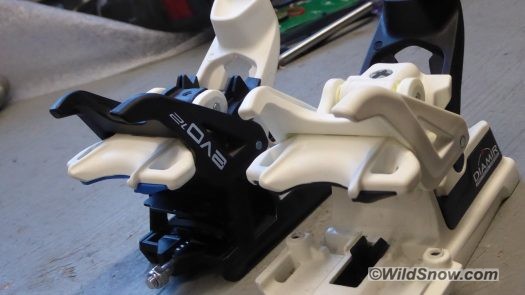
High lifters, same, both Evo and Vipec lifters are equal in height. See our ramp and heel lifters comparison chart.
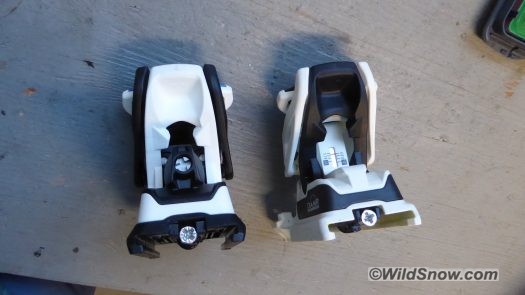
View from rear, big change is location of tension adjustment screw (upper screw in Evo to left). This has to do with the type of mechanicals create resistance for the pins, clearly this is the biggest change.
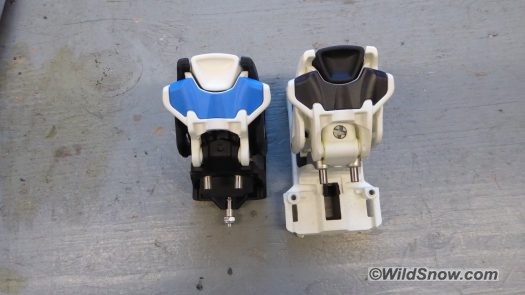
Top view, spot the adjustment screw on Vipec, not on top of Evo. From what I’ve seen, both types of heel units work well for ski touring so long as latest bug-free versions are used, but I’m guessing Fritschi had good reasons for the Evo changes, and I’d recommend that over the Vipec.
Not much else. The huge difference is of course between Vipec/Evo and Tecton. I’m not sure a comparo in that regard is appropriate, too much apples to oranges. Tecton heel is almost entirely and strongly different in that it does not have pins, and is not a “classic” tech binding heel of any sort.
More Evo and Vipec coverage here and here.
WildSnow.com publisher emeritus and founder Lou (Louis Dawson) has a 50+ years career in climbing, backcountry skiing and ski mountaineering. He was the first person in history to ski down all 54 Colorado 14,000-foot peaks, has authored numerous books about about backcountry skiing, and has skied from the summit of Denali in Alaska, North America’s highest mountain.

